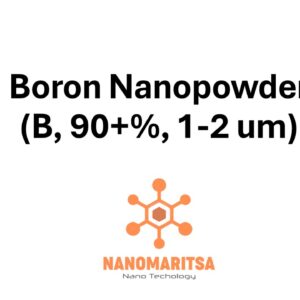Aluminum Nanopowder (Al, 99.9%, 70 nm, metal basis) is a finely engineered form of aluminum in the nanoparticle size range, with a particle diameter of approximately 70 nanometers (nm). This nanopowder retains the desirable properties of aluminum, such as high conductivity, low density, and chemical reactivity, while demonstrating unique nanoscale characteristics, including enhanced surface area and improved material interaction. Below is a detailed overview:
1. Key Features:
Aluminum (Al): The nanopowder is composed of aluminum, a lightweight and versatile metal known for its excellent electrical conductivity, thermal conductivity, and corrosion resistance. Aluminum is widely utilized across industries like aerospace, automotive, energy, and electronics. Its versatility and performance make it an essential material in advanced engineering and scientific research.
Purity (99.9%): With a high purity of 99.9%, this nanopowder contains minimal impurities, ensuring consistency and reliability in performance. The high purity is crucial for applications requiring stringent quality control, such as medical devices, energy systems, and high-precision manufacturing processes.
Nanoparticle Size (70 nm): Featuring an average size of 70 nm, the nanopowder strikes a balance between enhanced surface area and manageability in handling. This size enables exceptional dispersion in matrices, optimized chemical reactivity, and enhanced interfacial properties compared to larger particles or bulk aluminum.
Metal Basis: The metal basis confirms that 99.9% of the nanopowder consists of pure aluminum, ensuring excellent thermal, mechanical, and chemical properties necessary for demanding industrial and technological applications.
2. Properties:
Surface Area and Reactivity: The nanoscale size of 70 nm leads to a significant increase in the surface area-to-volume ratio, boosting the material’s chemical and physical reactivity. This property is highly valuable in fields such as catalysis, energy storage, and advanced coatings.
High Conductivity: Aluminum nanopowder retains its inherent high electrical and thermal conductivity, making it suitable for applications like energy storage systems, electromagnetic shielding, and thermal management in electronics.
Lightweight: The low density of aluminum, coupled with its nanoscale size, offers unparalleled advantages in weight-sensitive applications, such as aerospace and automotive components, where material performance and efficiency are paramount.
Oxidation Resistance: Although aluminum forms a protective oxide layer that provides corrosion resistance, the increased surface area of the nanopowder may heighten its susceptibility to oxidation. Proper storage is necessary to maintain its stability and functionality.
3. Applications:
Energy Storage: The enhanced surface area and reactivity of the nanopowder make it an excellent material for energy storage technologies, including lithium-ion and solid-state batteries. Its incorporation can improve energy density, charge/discharge efficiency, and cycle stability.
Aerospace and Automotive Industries: Aluminum nanopowder is instrumental in creating lightweight composites, high-performance coatings, and advanced lubricants. These contribute to reduced fuel consumption, enhanced performance, and extended component life in aerospace and automotive systems.
Catalysis: Its high reactivity and surface area make aluminum nanopowder a preferred choice in catalysis, enabling efficient chemical transformations in industrial processes, fuel cell development, and environmental remediation.
Additive Manufacturing: The material is widely used in metal-based 3D printing technologies. It facilitates the production of lightweight, structurally robust components for specialized applications in aerospace, medical implants, and engineering prototypes.
Coatings and Surface Treatments: Aluminum nanopowder enhances the functionality of coatings, including improved corrosion resistance, thermal stability, and aesthetic qualities. It is also utilized in anti-corrosion treatments and advanced nanocomposite paints.
Pyrotechnics and Explosives: Due to its high reactivity and rapid energy release, aluminum nanopowder serves as a critical fuel component in pyrotechnic displays, propellants, and explosive materials used in mining and military applications.
4. Handling and Safety:
Health and Safety Considerations: The fine nature of aluminum nanopowder demands stringent safety measures during handling. Inhalation or ingestion of nanoparticles can pose health risks, including respiratory and systemic effects. Always wear appropriate personal protective equipment (PPE) such as gloves, goggles, and respirators.
Storage: Store aluminum nanopowder in a cool, dry, and well-ventilated environment to prevent oxidation and particle aggregation. Sealed, moisture-free containers are essential to maintain the material’s stability and effectiveness over time.
Precautions: Due to its fine particle size, aluminum nanopowder is prone to becoming airborne. Always handle it in controlled environments like fume hoods or glove boxes to prevent inhalation or accidental release. Follow strict disposal guidelines to minimize environmental impact and ensure compliance with safety regulations.
Summary:
Aluminum Nanopowder (Al, 99.9%, 70 nm, metal basis) represents a high-performance material combining nanoscale advantages with the inherent properties of aluminum. Its high purity, reactivity, conductivity, and lightweight characteristics make it indispensable in cutting-edge applications across diverse industries, including energy storage, aerospace, automotive, catalysis, and additive manufacturing. Proper handling and storage are critical to unlocking its full potential while ensuring safety and environmental responsibility. This nanopowder is a cornerstone of advanced material science and technology, enabling innovative solutions for the challenges of tomorrow.
| Measurement (gr) | 25 grams, 100 grams |
|---|






